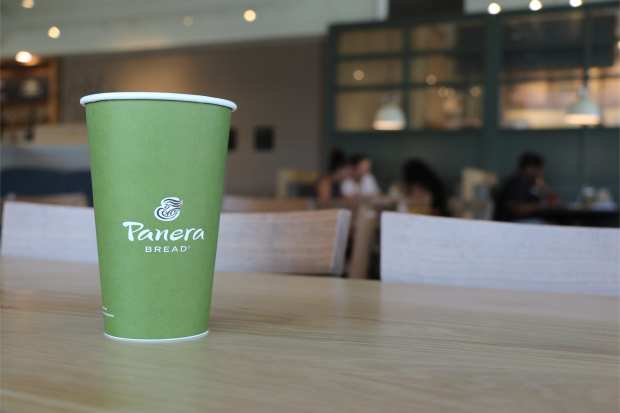Panera’s Coffee Deal Blends Loyalty And Competition

To paraphrase Shakespeare, there’s nothing new under the sun when it comes to retail. But Panera Bread’s coffee subscription program just might come close.
The subscription plan was rolled out on Thursday (Feb. 27) and will cost $8.99 per month, according to a CNBC report. The move is part of Panera’s overall upgrade of its café offerings, particularly at breakfast time, with additions like wraps and an expanded variety of coffee and tea options. Burger King experimented with a similar coffee subscription program last year. But in terms of commitment and loyalty program innovation, the plan is a bold move, competitively sound and bound to cause some reactions from other quick-service restaurants (QSRs), mainly Starbucks and Peet’s.
First, the commitment. Panera put on a full-court press push for My Panera + Coffee, not hiding it in an internal web page, although the effort does have its own site. It obviously wants consumer usage rather than program awareness. The deal is limited to MyPanera members, which QSR magazine puts at 38 million. However, by signing up for the program a consumer becomes a loyalty program member. It’s a subtle but smart way to get more loyalty members.
According to QSR, more than half of Panera’s total transactions come from loyalty members. Sara Burnett, Panera’s VP of wellness and food policy, told the publication Panera’s coffee subscription program is different from the typical model. “It’s actually about providing true value to the guest that really actually matters to them. Especially things that are part of your daily ritual, like coffee,” she says.
And outside of the Burger King model, it’s hard to find a mass market subscription program that stems from brick-and-mortar locations. There are plenty of subscription-based companies that have opened retail locations, such as AdoreMe and Rent The Runway. Customer retention programs have focused on “sticky” apps like traditional loyalty programs (Starbucks) and services such as order ahead (Chipotle).
Of course, subscriptions and the sharing economy have been around for years, but mobile technology and social media’s explosion sent these models into sales and business adoption hyper-growth, according to the PYMNTS February Subscription Commerce Tracker. Many of the key factors that drive customers to the sharing economy, such as the need for flexibility, convenience and affordability, also draw them to pay for products and services with an automatic monthly or annual subscription plan.
The number of U.S. adults participating in the sharing economy is expected to grow to 86.5 million next year — up from 44.8 million in 2016 — driving revenue in the space to $335 billion by 2025. Companies both in and out of the sharing economy are investing in enterprise system upgrades, which will enable subscription model adoption and boost the agile monetization platforms market’s value from $8.5 billion in 2016 to $36.75 billion by the end of this year. Subscription eCommerce has grown more than 100 percent per year since 2016, largely because of consumer and business demand, leaving many companies wondering if combining the two approaches will create positive impacts.
And Panera will have to contend with the potential drawbacks of using subscription services. According to an eMarketer look at retail subscriptions, possible drawbacks include included spending more money than intended (53 percent), not getting the right number of products at the right time (52 percent) and shipments not arriving on schedule (34 percent).
And “… creating a valuable subscription means understanding the difference between what consumers want and what they need,” that report said. “Is the subscription going to complement or replace established shopping habits? A good place to start is by looking at various niches of consumer behavior and reasons for buying.”
Expect copycats to the Panera program. At 2,000 locations it’s too big to ignore. While Starbucks will not have to react, other QSRs will need to examine both their loyalty programs and their customer preferences in the coming weeks as Panera rolls out.
